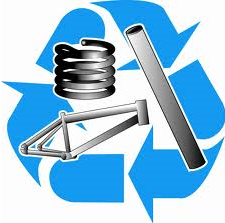THE ENVIRONMENTAL BENEFITS
The motor recycling industry performs a very important service. Through its process of dismantling, reusing, and recycling millions of vehicles that no longer function, this industry benefits society as a whole in many different ways. The act of recycling vehicles each year results in numerous benefits to the environment. The process happens in 4 stages
1. De-pollution
2. Dismantling
3. Destruction
4. Resource Recovery
Scrap My Car Ireland actively participate in this process as part of its business model. Once the car is scrapped the ATF will issue a certificate of destruction which effectively means the car has been de-registered, forward the details of the certificate of destruction to the National Vehicle File.

De-pollution
The first step in the vehicle recycling process is called de-pollution, and it focuses on the removal of all the fluids that are used in the operation of a motor vehicle. These include the removal of,
- Petrol or Diesel
- Oil
- Coolant
- Brake fluid
- Transmission fluid
- Air conditioning refrigerant
- Gear oil
- Windshield washer fluid
These materials, once removed from the vehicle, can be reused, reprocessed, recycled, or disposed of, in an environmentally responsible way that will not contaminate the water table or the food supply.
DISMANTLING
This comes next, and it is all about removing the usable parts of the vehicle for re-sale. These parts are worth more than their scrap value. Once they are removed, these reusable parts can be sold on again to keep older cars running, or to fix body damage from an accident. Useful parts removed from a scrap cars are :
Doors, Bumpers, Bonnet, Booth, Rear hatch, Grille, Headlights, Taillights, Seats, Dashboard, Door panels, Console, Stereo, GPS system, Windshield, Windows, Wheels, Tyres, Suspension parts, Axles, Engine, Transmission, Catalytic converter, Battery, Radiator, Air conditioning components, Hoses and many more!
Scrap yards that do this will then offer these parts for sale across the counter or to internet buyers. Parts that are damaged or worn out, or not of resale quality, are scrapped and recycled, depending on what they are made of.
DESTRUCTION
Now we come to the third stage, where all the value that remains will come from the scrap value inherent in the materials that are left. Most of this value will come from the steel and aluminium in the body structure, chassis, and inoperative mechanical parts.
The shell that is left will usually be flattened or crushed, so that it takes up less space. It is then fed into a giant shredding machine, which breaks it down into chunks of metal that are small enough to hold in your hand. Every piece of metal recovered is a piece of metal that does not have to be mined thus saving a little piece of the environment every day.
RESOURCE RECOVERY
This is the final step, in which these chunks of mixed metals are then further processed by machines that can separate the ferrous metals (iron and steel) from the non-ferrous metals (aluminium and copper), and can also remove the plastics, fabrics, and other non-metallic items that remain. This mostly non-metallic material is called Automotive Shredder Residue, or ASR. It is also known in the trade as “auto fluff.”
It’s a very high-tech process designed to reclaim every possible bit of an end of life car, which is good for the environment and for the motor recycling industry as whole.
And that is how a car is recycled !


